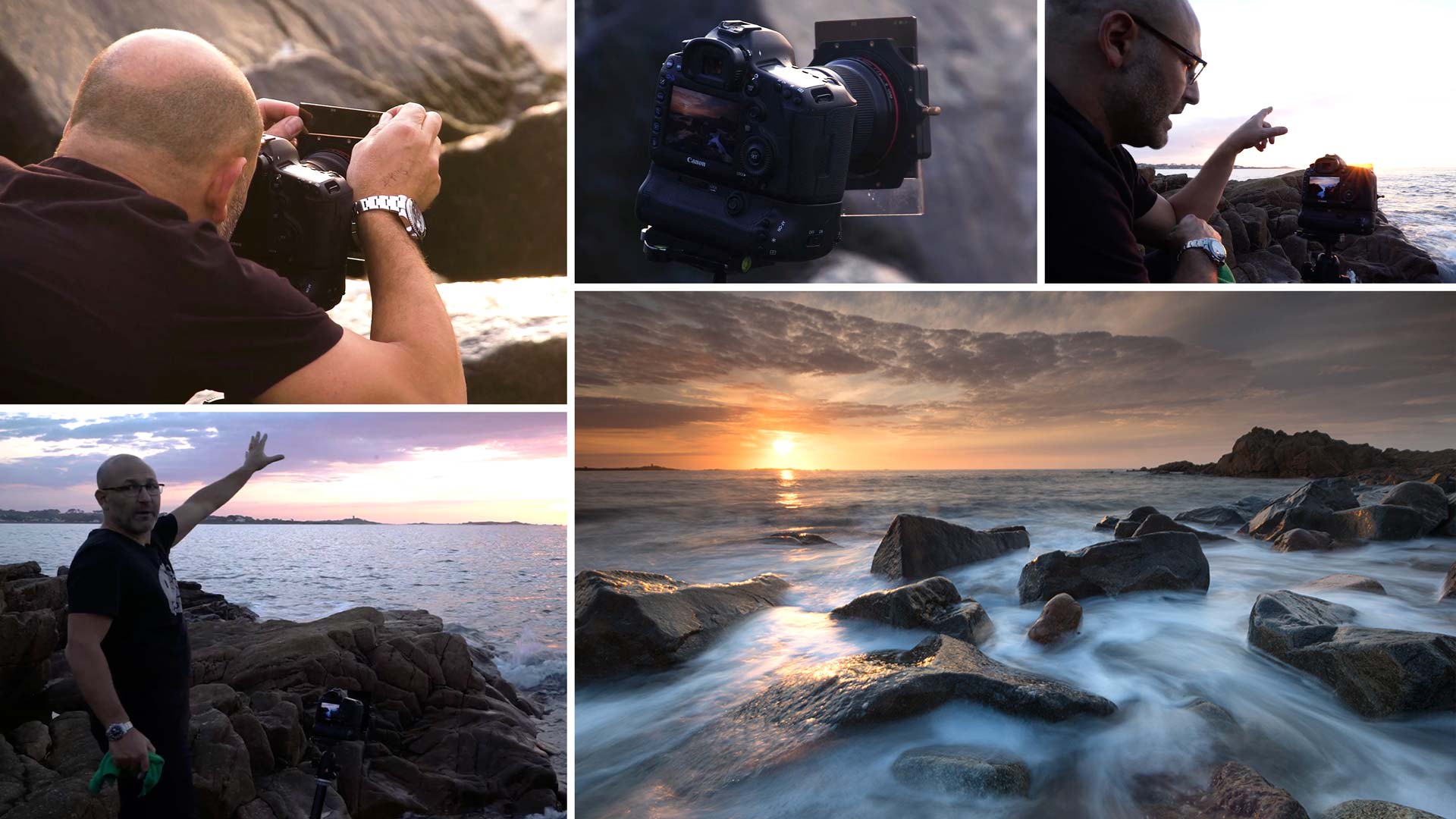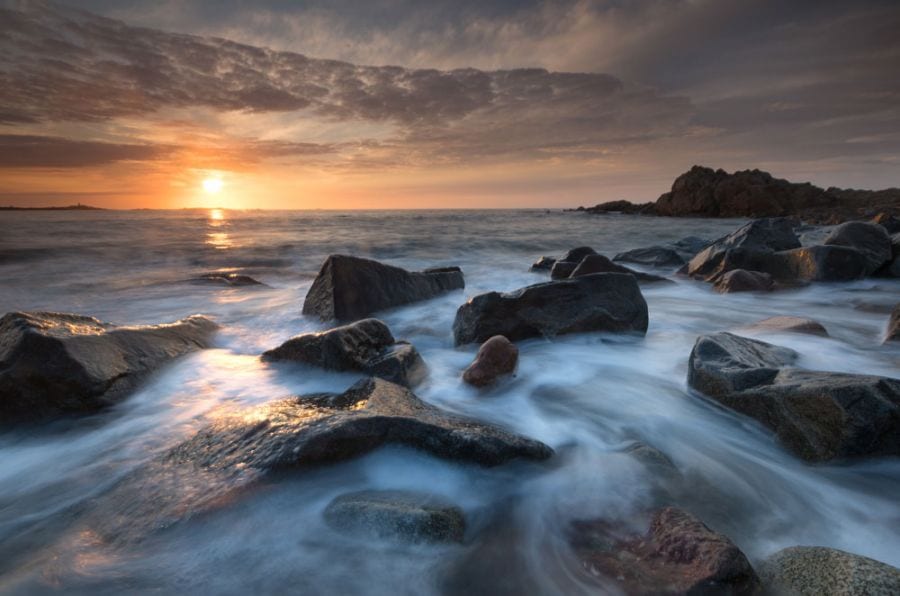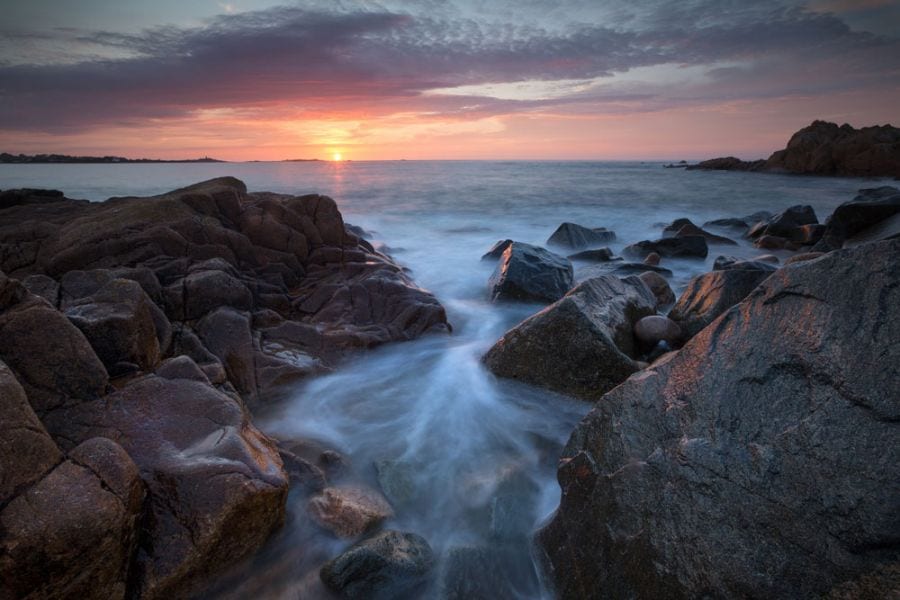Coastal Sunset Photography
Before getting his camera out at a potential landscape location, Karl spends some time identifying the best possible areas to photograph.
In this photography class, Karl explains exactly what he looks for in a location and the elements that make a strong composition. You’ll learn how interesting perspective and good framing are essential components for a good shot before Karl explains why it’s important to experiment with different camera settings to get the best image.
Working against a rising tide, he also explains which filters he uses and why it can be worth waiting a while after the sun has set.
This class also includes some bonus outtakes of the team’s incredible dolphin sighting.
In this class:
- Landscape photography: How to photograph a coastal sunset
- Landscape photography tips
- How to identify a good location for landscape photography
- Camera settings for landscape photography
- Using filters for landscape photography
- Experimenting with different shutter speeds for different effects
You can watch the post-production for this image in the next class.
Questions? Please post them in the comments section below.




Comments
Dolphins spotted – Sport mode activated. My god did that thing fly off at speed!
You make me laugh Karl, quite the entertainer…
Ha Ha I get too excited for my own good sometimes.
Thank you Karl!
Karl, you talked about using an adapter on your 70-200 mm lens for more focal length. I have the Canon EF 70-200mm f/2.8L IS III USM Lens, which looks like what you are using, I didn’t know I could buy an adapter that increases the focal length. Can you share which adapter you are using and whether it would work on my lens?
Hi Tamarah, sure here it is https://www.canon.co.uk/lenses/extender-ef-2x-iii-lens/
I totally can relate to the difficulties of such shots. And Thank you, Kral!! 🙂 Really need to be careful and watch for the tides coming in… I once was trying to focus and almost got a bad wet luckily someone else behind me seeing a big one coming and yelled to leave. Unfortunately when come home for close examine, somehow I didn’t nail the focus! :'(
Thanks, Karl.
Hi Karl,
Great video and fantastic images at the end. I’m curious, what lens did you use? I currently have the Canon17-40mm f4 wide angle lens on my 6d but find it isn’t that sharp. I was thinking of getting a 24-70mm f2.8 instead. Would this be wide enough for this sort of shoot or would a 16-35mm be better? Thanks.
Hi Keith, I prefer the 16-35 cheers Karl.
Hi Karl, question for you: why you prefer very close aperture over an ap. of about F9/11 which usually gives a better overall sharpness? Isn’t lens best sharpness point around that range?
thanks and congrats.
Hi Luca, I need the depth of field to ensure the objects and distance are covered. Also with good lenses I’ve never had any issues shooting at f16 and even f22.
I love it… I was laughing , things you doing for your members I love it my friend keep up the good work.. 🙂
Thank you Cahit.
Hi Karl,
Thank you, this was great. I picked up on a lot that I thought I knew but did not.
Have a great week.
First video since joining and really enjoyed it! Thanks Karl 🙂
Hello
Loved the coastal shots and with such long exposures to create the smooth milky look of the water.
When you press the shutter button are you using the timer to release it to prevent any camera movement?
Hi Charles, no I press the button carefully. Generally speaking if your exposure time is in the seconds then the brief moment of pushing the button will have little effect on the exposure. The biggest problem for me usually comes from the sea or waves moving my tripod during the exposure.
Hi Karl. Really enjoyed this one, looking forward to more in the future 🙂
Really pleased you’ve been enjoying them Ashleigh!
Hi Karl and thanks for your reply. I asked this because I was surprised at some of the settings you used in the coastal videos. (F18, 20 etc).
Hi Justin, understood but i’ve not had any problematic issues with diffraction on the Canon at those apertures although I’d say f20 is probably pushing it a bit.
Hi Karl, nice video, thanks.
I was just wondering if you had ever used any reverse grad filters before ? several manufacturers such as Nisi or Formatt Hitech make them now. I think I might invest because they seem to be perfect for sunsets when the Sun is low on the horizon. Also I find that diffraction creeps in at apertures like f16-18 on my 6D I try not to go smaller than f11. Is this something that you fix in post production? Cheers
Hi Justin, you can’t fix diffraction in post production as it has affected the actual recorded pixels and reduced physical sharpness and contrast. Reverse grads can be a useful tool but I’ve only ever used normal grads
awesome shots no words to describe and thanks for your class on low shutter